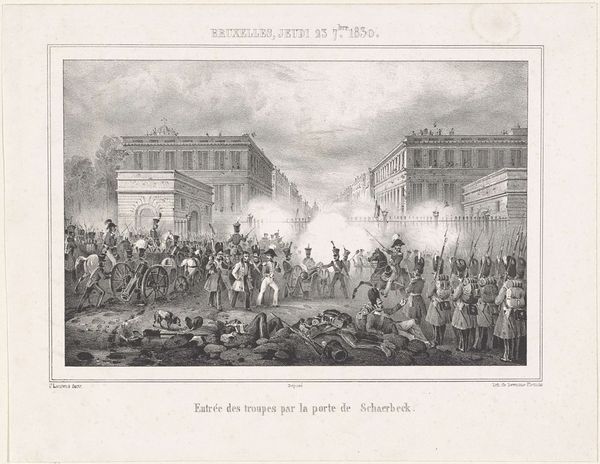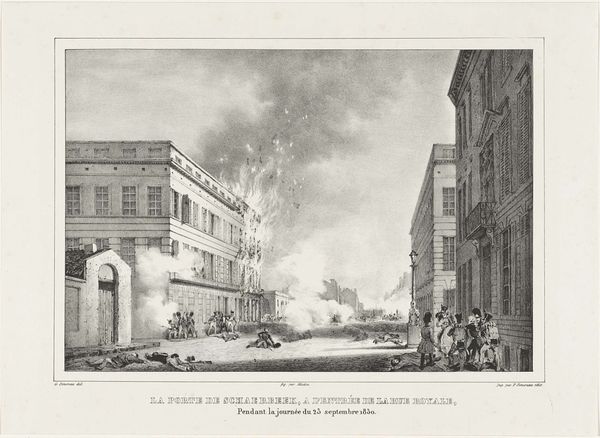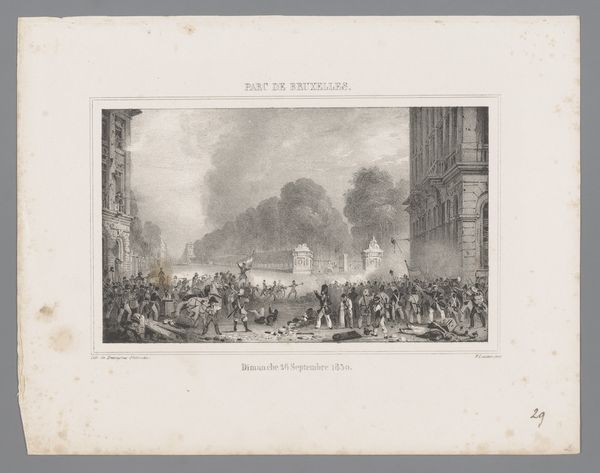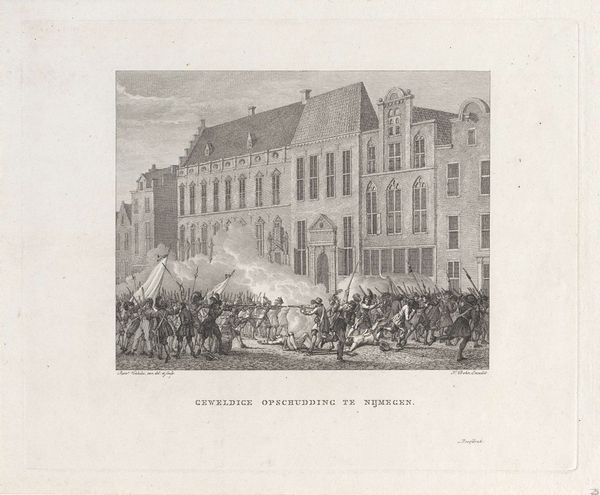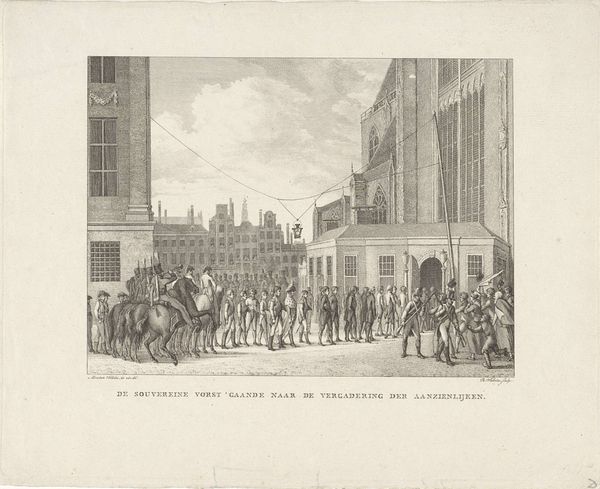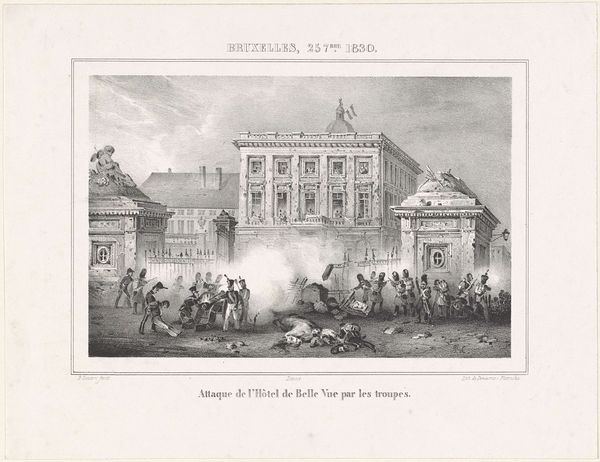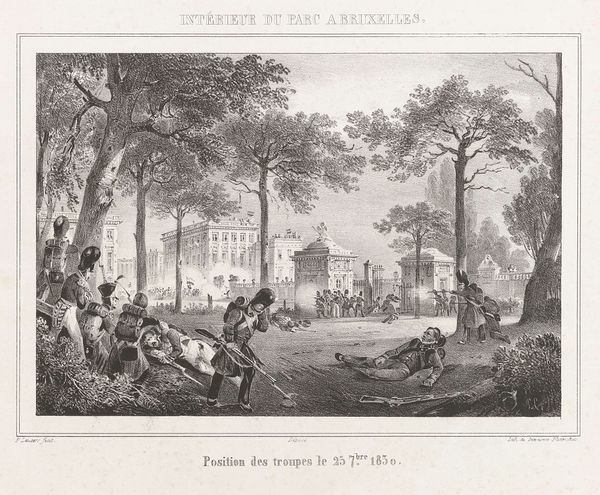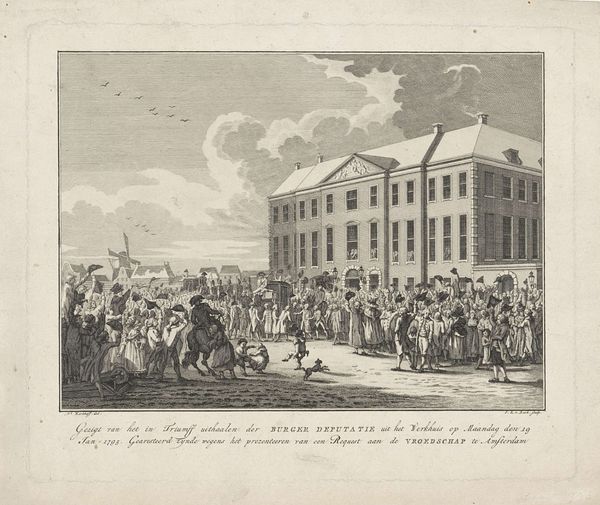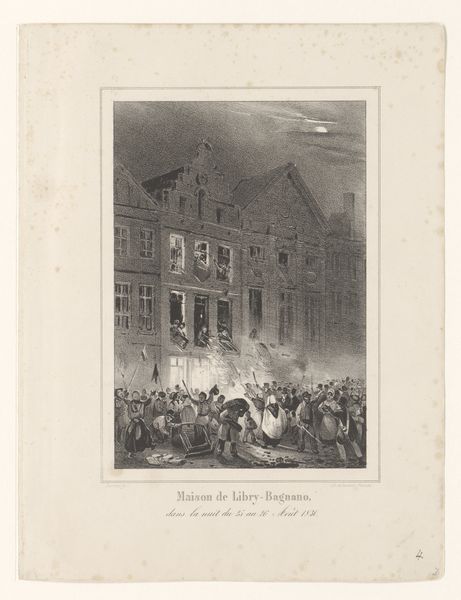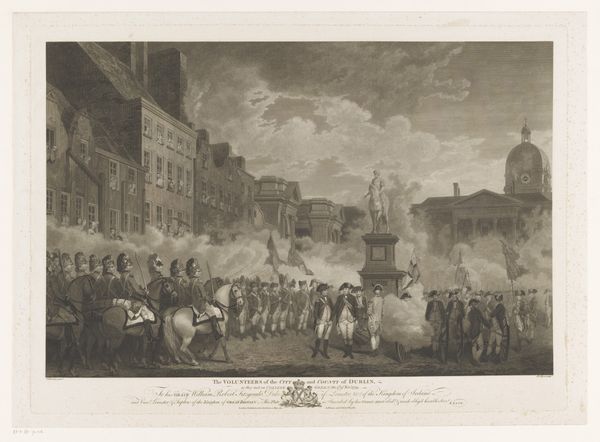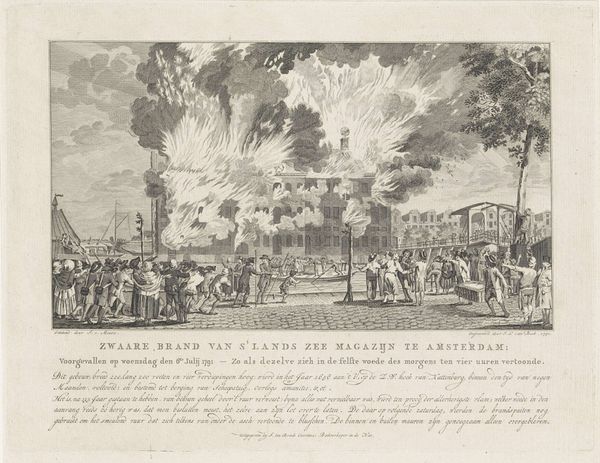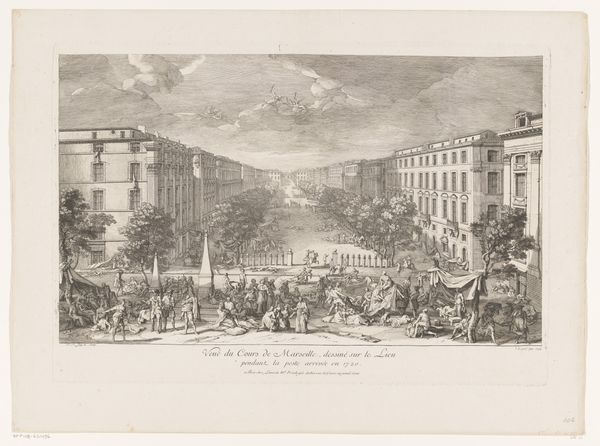
lithograph, print, engraving
#
lithograph
# print
#
old engraving style
#
archive photography
#
historical photography
#
romanticism
#
19th century
#
cityscape
#
history-painting
#
engraving
Dimensions: height 196 mm, width 242 mm
Copyright: Rijks Museum: Open Domain
Curator: The lithograph before us, created by Jacques Sturm between 1830 and 1831, is titled "Jambe de Bois achter het geschut in Brussel, 1830," or "Peg Leg Behind the Cannon in Brussels, 1830." It depicts a scene from the Belgian Revolution. Editor: My first impression is one of stark contrast—the imposing architecture bookends the chaotic energy of the revolt. The almost monochromatic palette really enhances the sense of turmoil and conflict. Curator: It's interesting how Sturm situates this event within a defined urban space. The buildings suggest an established order, one that's directly challenged by the revolutionary figures with their cannons. Note that "Jambe de Bois" refers to a prominent figure of the revolt, a man with a wooden leg who became a symbol of the uprising. Editor: The linear precision in the rendering of architectural details strikes me. Sturm's use of hatching to define form is particularly effective, but the central group is not as carefully rendered, and conveys movement. Is that a flag in the distance? Curator: Indeed. Sturm subtly integrates that element, suggesting a nationalistic cause fueling the uprising. Prints such as this were crucial in shaping public sentiment at the time. It’s an early example of media influencing perceptions and galvanizing political action. Editor: You're right, and I am also struck by how Sturm uses scale. The relative size of figures to buildings communicates a sense of human impact, the crowd and chaos disrupting a larger institution or established order. It has such an emotional intensity despite its limited palette. Curator: Absolutely. He captures the pivotal moment where individual agency clashes with institutional power, all mediated through this historical event in Brussels. Sturm invites viewers to become participants in the drama. Editor: Reflecting upon it, Sturm masterfully balances precise linework and almost documentary style detail with the more emotionally loaded topic of revolution. It's a print with compelling tensions. Curator: Agreed. It's a powerful intersection of artistic skill and social commentary, revealing much about the era’s political landscape and the power of visual representation.
Comments
No comments
Be the first to comment and join the conversation on the ultimate creative platform.
